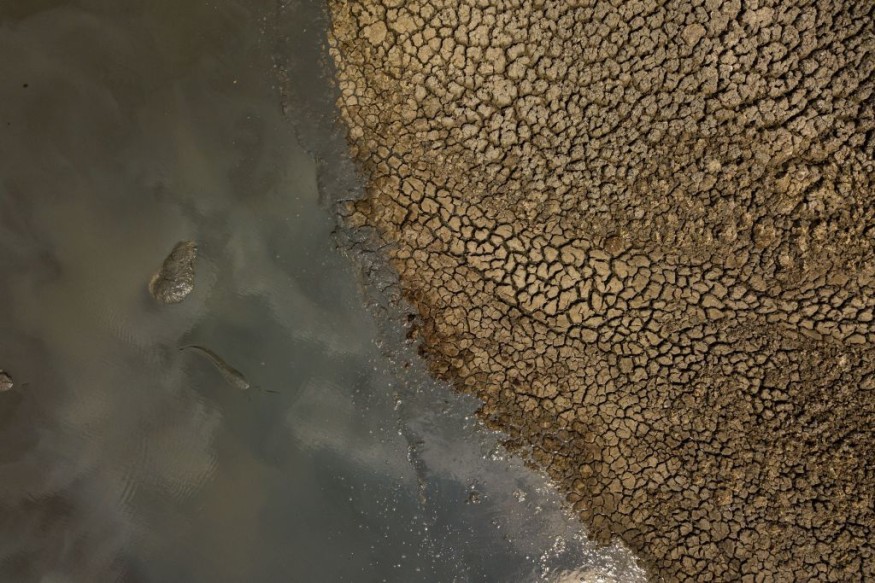
Thoughts concerning the hottest rock has now been declared as experts have finally made it official. Researchers claim that the hottest sandstone yet unearthed in the Earth 's foundation, was indeed extremely scorching.
The Hottest Rock Ever Discovered
According to ScienceAlert, the stone, a fist-sized chunk of black glass, had just been revealed in 2011 and first disclosed in 2017, when researchers authored in the publication Earth and Planetary Science Letters that it had shaped at levels as high as 4,298 ℉, which is significantly warmer than much of the Upper mantle.
A fresh examination of elements from the very similar location confirms that the blistering temperature was genuine. A rock strike around 36 million years ago in what is now Labrador, Canada, burned and reshaped the stones.
The repercussions created the 17-mile-wide Mistastin hole in the ground. Mistastin crater resembles a Moon crater and is frequently utilized as a stand-in for such studies.
During the moment, Michael Zanetti, a doctoral candidate at Washington University St. Louis was present to collect the crystal rock as part of a Canadian Space Agency-funded investigation about how to integrate explorers and space probes operating together to investigate a whole other biosphere or Heavenly bodies.
The unexpected discovery proved out to be significant. The stone contains zircons, which are exceptionally resistant elements that form amid great temperature, according to a study. The framework of zircons can reveal how hot the environment was when they shaped.
Investigators sought to analyze over one zircon to validate their preliminary report. Gavin Tolometti, a research scientist at Western University in Canada, alongside with his colleagues examined four additional zircons in scour sites in the latest investigation.
Such materials were from several sorts of stones in various places, providing a better complete picture of how the collision affected the earth, as reported by Live Science. One came from a glassy rock shaped in the influence, two from stones that liquefied and resolidified, and another from a rock layer that contained glass remnants shaped in the implications.
The findings, which were posted on April 15 in the journal Earth and Planetary Science Letters, demonstrated that the impact-glass zircons were created in at least 4,298 F heat, precisely as the 2017 study suggested. Furthermore, the glass-bearing bedrock was already vaporized to 3,043 degrees Fahrenheit.
Tolometti added in a release that the diverse variety will assist experts figure out exactly where to hunt for the most amazingly materials in nearby sites.
Also read : Rare Planetary Alignment to Form by the Middle of April this Year, Here's How to Watch It
Hottest Rock Ever Found in the Earth's Crust
It was also stated in Western News recent publication that experts are beginning to recognize that if we desire to uncover indications of these elevated heat, thus, researchers should to examine at particular places rather than arbitrarily choosing throughout a whole area.
The experts also discovered reidite, a pigment, amid the crater's zircon granules. Reidites occur when zircons are subjected to extreme degrees and rates, and their existence enables scientists to compute the stressors encountered by the stones during the collision.
They discovered that the effect created stressors ranging from 30 to 40 gigapascals, whereas one gigapascal is equivalent to 145,038 pounds per square inch of pressure. This might have been the strain at the impact's periphery; at the vicinity where the space rock straightforwardly struck the thick layer, the stones would have incinerated rather than dissolved.
The observations can be extrapolated to many sinkholes on within and beyond the Earth. The scientists expect to utilize comparable techniques to understand stones recovered from the Apollo quests' implications craters on the Moon. It could be a notch forward towards trying to comprehend how stones were altered by repercussions decimating throughout the Planetary System.
Related article : An Ancient Tsunami-Unleashing Earthquake 3800 Years Ago Sent Humans into Hiding for a Thousand Years
© 2025 NatureWorldNews.com All rights reserved. Do not reproduce without permission.





